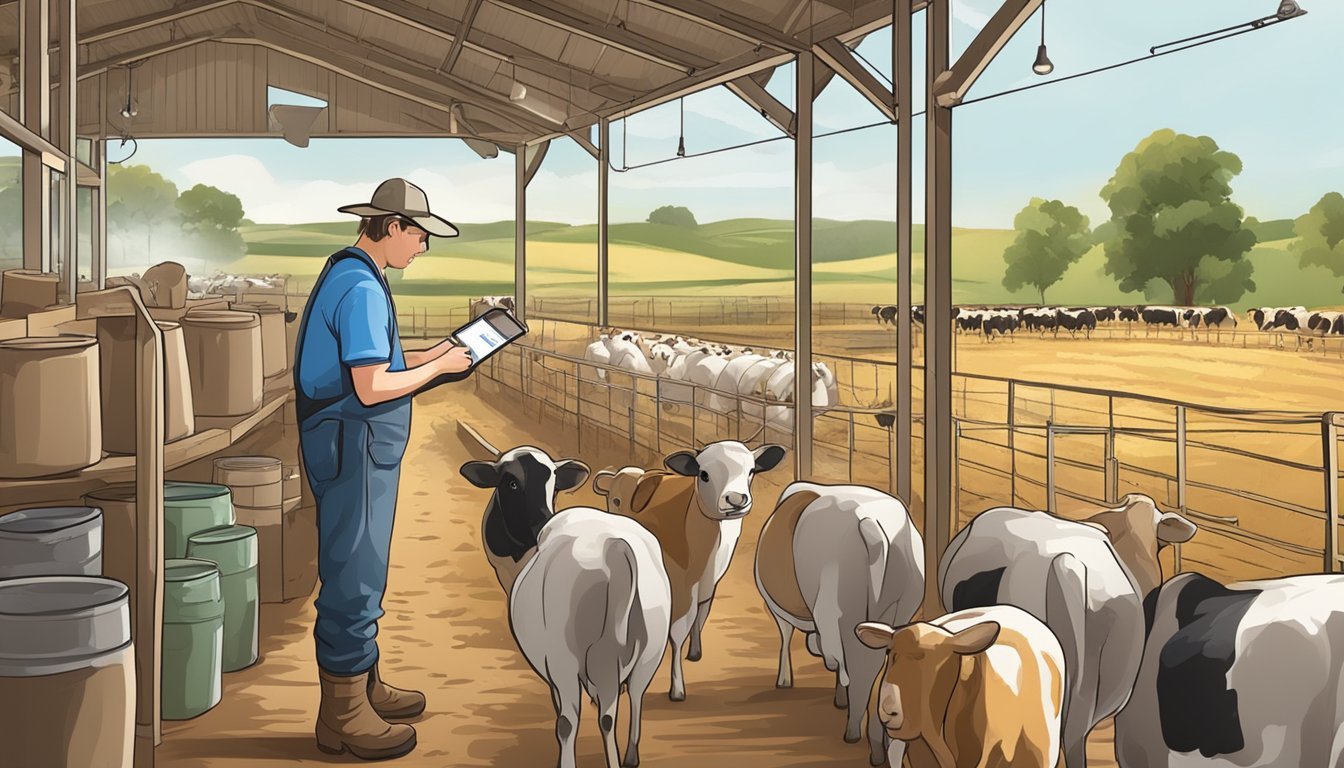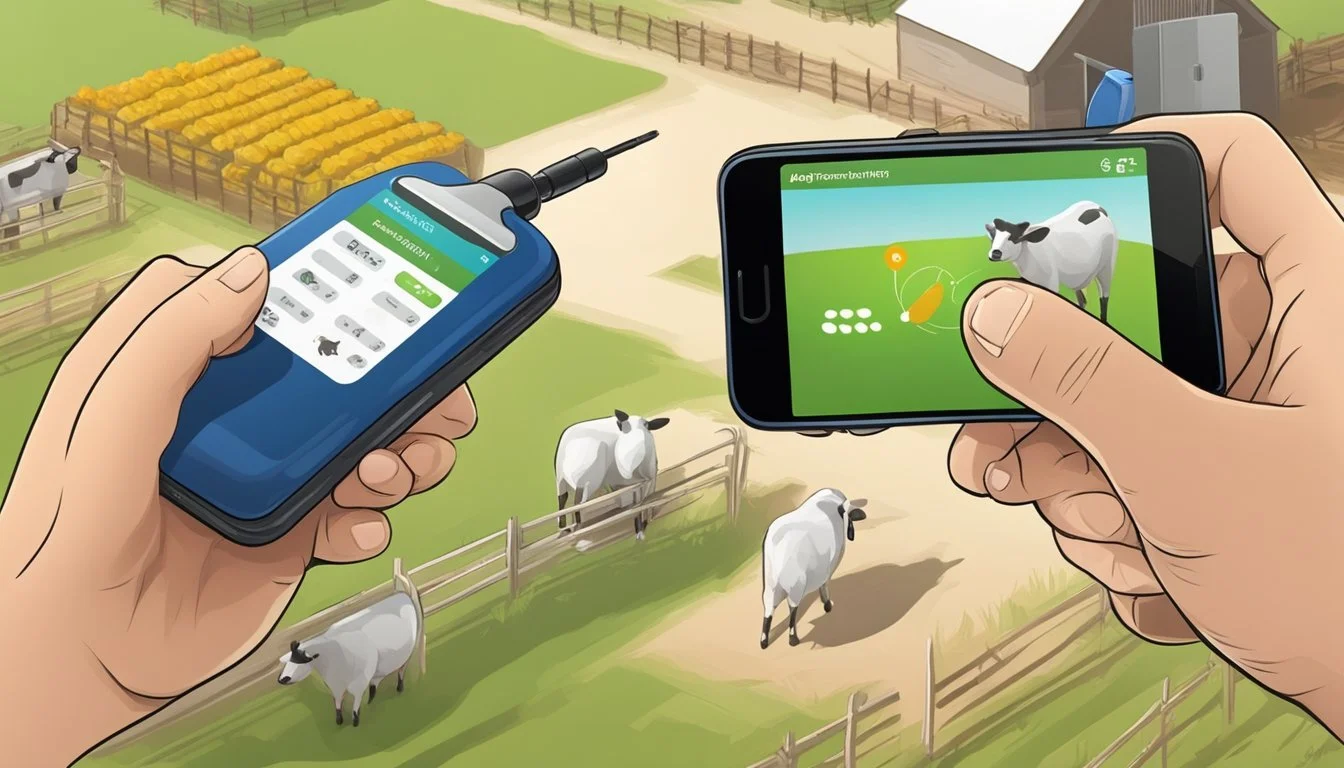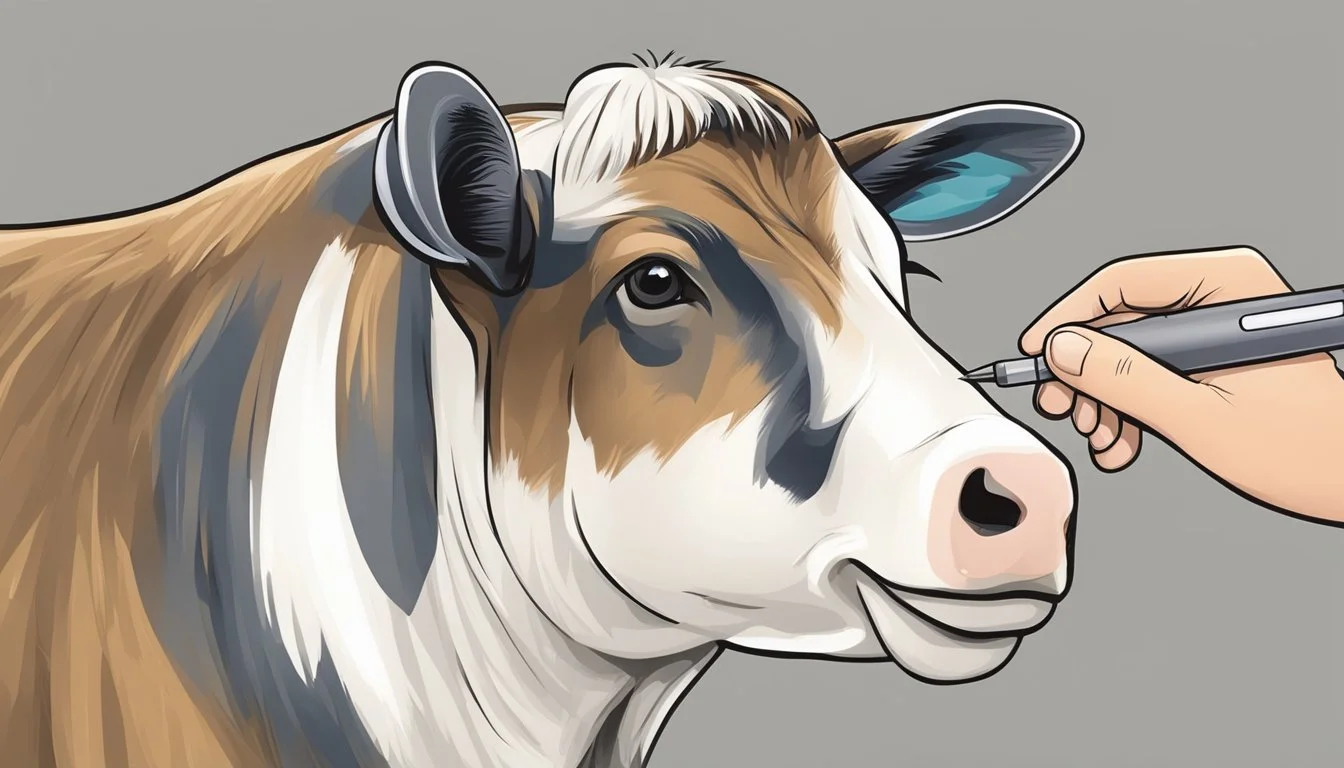How to Use Ear Tags and Applicators for Efficient Livestock Identification and Tracking
A Homesteader’s Guide
In the realm of livestock management, the implementation of ear tags is a fundamental component for homesteaders aiming to maintain orderly tracking and identification of their cattle. Ear tags serve a plethora of purposes, ranging from simplifying record maintenance to facilitating breeding programs and disease control measures. They carry essential data such as the animal's identification number, which is unique to each individual within the herd. This system of identification is critical for a homesteader to keep accurate health records, manage genetic lineages, and ensure each animal can be accounted for.
Using an ear tag applicator correctly is imperative for the welfare of the animal and the durability of the tag itself. Prior to tagging, the homesteader must ensure that the ear is devoid of dirt and has been disinfected to avert infection. The applicator is then used to place the tag at the optimal site on the ear, which typically is dependent on the type of tag—visual or electronic identification (EID). Placement is key; a tag situated too close to the edge may lead to loss or damage, while a location deeper towards the head can offer a more secure fit due to the thicker cartilage present. Thus, knowing where and how to affix the ear tag is as crucial as the tag's information for successful livestock management.
For homesteaders, the practicality of ear tagging is evident, as it allows for the quick and precise identification of each animal from a distance, streamlining management tasks and enhancing traceability. Nonetheless, this method of livestock identification is not without its potential downsides, such as the loss or damage of tags and the fading of information over time. Being mindful of these challenges, homesteaders can adopt best practices in ear tagging to maximize the benefits of this identification system.
Understanding Ear Tags and Their Importance in Livestock Management
Ear tags serve as a cornerstone for livestock management systems, providing a reliable means of identification and facilitating efficient tracking capabilities.
Types of Ear Tags: From Basic to RFID
Basic Ear Tags
Material: Commonly made of plastic or metal.
Identification: Numeric or alphanumeric codes.
RFID Ear Tags
Technology: Radio-frequency identification (RFID) chips embedded in tags.
Data Storage: Capable of storing a wealth of information beyond basic identification.
Benefits of Using Ear Tags for Animal Identification
Enhanced Traceability
Facilitates tracking of animal history and movement.
Essential for disease control in the case of outbreaks.
Streamlined Record-Keeping
The unique identifier on each tag ensures accurate records for breeding, vaccinations, and health treatments.
Electronic Identification
RFID tags provide automatic identification, reducing human error.
Allow for faster and more precise data collection regarding cattle identification and animal health.
Selecting the Right Ear Tag Applicator
The choice of a suitable ear tag applicator is a critical decision impacting the efficiency and effectiveness of livestock identification and management. This tool is responsible for placing the ear tags securely and properly onto the livestock's ear without causing undue stress to the animal.
Manual vs Automatic Applicators: Pros and Cons
Manual Applicators
Pros:
Cost-effective solution for small-scale operations.
Simple design with fewer moving parts; less prone to malfunction.
Greater control over the tagging process.
Cons:
More physically taxing, requiring more effort per tag.
May be less efficient for tagging large herds.
Automatic Applicators
Pros:
Quicker tagging process, beneficial for large herds.
Reduces operator fatigue as it requires less manual force.
Often provides more consistent placement.
Cons:
More expensive, making it less ideal for small batches.
Complex design may lead to more frequent maintenance requirements.
Ensuring Compatibility Between Tag and Applicator
When selecting an ear tag applicator, one must ensure that it is compatible with the ear tags being used. Incompatibility between the two can result in poor tag retention and potential harm to the animal. The applicator must match the technology of the ear tags -- whether they are visual identification tags, RFID tags, or another type. The industry has moved towards standardization to a degree, but variations still exist.
Best Practices:
Verify the type of tags (plastic, metal, electronic) and choose an applicator designed for them.
Read manufacturer recommendations for applicator compatibility.
Test the applicator with a few tags before proceeding with the entire herd to ensure proper function.
Best Practices in Ear Tag Application
Efficient livestock identification and tracking hinge on the quality of ear tag application. This requires precision in tag placement and strict hygiene protocols to minimize the risk of infection.
Proper Tag Placement for Optimal Readability and Retention
Placement: The tag should be inserted in the center of the ear for visual tags, and two-thirds of the way into the ear from the ear edge towards the skull for electronic identification (EID) tags. Tags placed too close to the ear tip risk snagging and pulling out due to the ear's thinner cartilage, while the thicker cartilage nearer to the head ensures better fit and retention.
Visual Tags: Center of the ear
EID Tags: Two-thirds from the edge towards the skull
Retention: Proper placement not only guarantees visibility but also reduces the chances of the tag being torn out. This area has sufficient space from the edges to prevent easy catches and tears, ensuring that the tag remains secure over time.
Preventing Infection: Hygiene and Disinfection Protocols
Hygiene: One must clean the ear, removing debris or hair before tag application. Proper hygiene practices help prevent biosecurity risks associated with tagging animals.
Cleaning: Swipe both sides of the ear with a disinfectant to ensure a sterile environment.
Instruments: Use the correct applicator for the designated tag and ensure that the applicator is sanitized pre- and post-use to reduce the risk of infection.
Disinfection: Application of a disinfectant to both the ear and the tag applicator is crucial. This step decreases the chances of introducing bacteria into the puncture site, which can lead to infections or abscesses. Regular cleaning of equipment is a critical factor in biosecurity measures.
Using these best practices, one can achieve a balance between effective animal identification and the well-being of the livestock, maintaining animal health and accurate tracking throughout their lifecycle.
Integrating Ear Tags with Farm Management Systems
Integrating ear tags into farm management systems is a crucial step in enhancing livestock identification and tracking, offering a structured approach to managing livestock data.
Using Ear Tags for Efficient Record Keeping and Data Analysis
Ear tags, especially those equipped with RFID technology, serve as a foundation for efficient record keeping within farm management systems. When an ear tag is applied to an individual animal, it can hold a unique identifier that correlates to digital records. Farmers can maintain a dynamic record-keeping system that allows for quick updates and data retrieval.
Steps to ensure effective record keeping:
Assign Unique Identifiers: Each ear tag should have a distinct number or code.
Update Records Promptly: Input data such as vaccination records, health checks, and breeding information as soon as they are available.
Regular Data Analysis: Utilize the gathered data for assessing herd performance, tracking growth rates, and making informed decisions.
By utilizing these methods, farmers can not only track the health and productivity of each animal but also draw insights to improve overall herd management.
Connecting RFID Tags to Farm Management Software and Devices
RFID tags offer seamless integration with farm management software and devices, including smartphones and tablets. This enables real-time access to livestock data and supplies chain information.
Key integration steps:
Software Synchronization: Ensure that the farm management software is capable of reading RFID tags.
Data Accessibility: With the proper setup, data from ear tags can be accessed on various devices.
Smartphone Apps: Use apps that sync with RFID systems for on-the-go management.
These integrations provide a comprehensive view of livestock data, from anywhere on the farm, promoting a more connected, data-driven approach to farm management. This connectivity is pivotal for keeping up with the fast-paced demands of modern farming and supply chain efficiency.
Monitoring Health and Productivity Through Ear Tags
Ear tags serve a critical role in the management of livestock by allowing farmers to track health and productivity indicators. Advanced tags now come equipped with technology such as radio-frequency identification (RFID), providing real-time data crucial for making informed decisions.
Tracking Livestock Activity and Milk Production
RFID tags provide an effective solution for monitoring livestock activity, an important indicator of overall health and productivity. They can collect data on how much the animal moves, which correlates with feeding patterns and potential health issues.
Specifically for dairy cows, milk production is closely monitored. RFID ear tags can record the frequency and length of each cow’s visits to the milking parlor, providing valuable insights into milk yield. By analyzing these data, farmers can adjust feed ratios and milking schedules to optimize milk production.
Disease Monitoring and Culling Decisions
The health of each individual animal within a livestock population is crucial for the maintenance of the entire herd or flock. Ear tags can track animal health metrics such as body temperature and activity levels, alerting farmers to illnesses before they spread or become more serious.
Culling decisions are made clearer with precise data from ear tags. In cases where disease or low productivity is detected, farmers can use the information from RFID ear tags to identify which animals may be best removed from the herd, thus maintaining a high standard of herd health and productivity. This targeted approach to culling ensures that only those animals negatively impacting herd output are selected, preserving the overall genetic quality and output of the herd.
Advanced Technologies and Future of Ear Tags
Recent advancements in livestock identification leverage cutting-edge technologies such as biometrics and artificial intelligence to deliver more sophisticated ear tagging systems. These solutions not only provide basic identification but also enable enhanced tracking and management capabilities.
Innovations in Livestock Identification: Biometrics and AI
The incorporation of biometrics and artificial intelligence (AI) into ear tagging systems has revolutionized livestock management. Electronic ear tags, equipped with sensors and AI algorithms, are now capable of more than simple identification. They offer detailed insights into animal health and behavior by analyzing movement patterns and biometric data. Facial recognition technology, expanding within the arena of biometric recognition, uses computer vision to identify individual animals, similar to how it is used in human identification. This method eradicates the need for physical tags, reducing the risk of loss or damage and enhancing animal welfare.
Advanced ear tags are being integrated with GPS tracking to monitor livestock location in real-time, an essential feature for extensive grazing systems. The data collected by these tags, processed by AI, can predict estrus cycles, detect early signs of illness, and monitor feeding behaviors, enabling proactive herd management.
Challenges and Opportunities in Implementing Advanced Systems
Despite the promise of these technologies, there are challenges to their widespread adoption. The initial cost for advanced ear tagging systems is higher compared to traditional tags, which may be a barrier for smaller operations. There is also the need for robust data management systems to handle the influx of information generated by these devices.
However, implementing these systems presents significant opportunities. They enable more precise management decisions, potentially leading to increased productivity. There is also a progressive push toward welfare-friendly practices, which these technologies support through non-invasive monitoring that can alert farmers to health issues before they become critical.
The future of ear tags is poised to evolve further with continuous improvements in sensor technology, data analytics, and machine-learning algorithms, enhancing the efficiency and effectiveness of livestock management on modern homesteads.
Legal and Ethical Considerations in Livestock Tracking
When utilizing ear tags and applicators for livestock, compliance with legal requirements is as crucial as adopting practices that ensure animal welfare. Farmers must balance efficiency in identification with ethical animal handling and consider both public health implications and economic factors.
Compliance with Livestock Identification Laws and Regulations
Livestock identification systems are not just a tool for effective farm management; they are also subject to stringent legal regulations that vary by region. These laws ensure that each animal can be traced through its lifetime, which is vital for several reasons:
Public Health: Quick and accurate traceability can prevent or limit disease outbreaks.
Market Access: Compliance with identification standards often determines market eligibility.
Regulatory compliance often mandates accurate, up-to-date records that link individual animals to their origin, vaccinations, and health treatments throughout their lives.
Balancing Animal Welfare with Technological Advancements
Advancements in livestock tracking technology offer a potential for profit maximization through improved herd management. However, farmers must ethically integrate these technologies to maintain standards of animal welfare. Key considerations include:
Minimizing Distress: Proper handling and tagging techniques reduce stress on animals.
Health Risks: The tagging process should avoid infection, and tags should not interfere with the animal's natural behavior.
Ear tagging should be performed with a focus on humane handling and careful application to prevent injury, adhering to ethical treatment principles despite the drive for operational efficiency.
Implementing Ear Tags for Enhanced Livestock Management
Ear tags are indispensable for effective livestock management, enabling identification and tracking of animals on a homestead. The process demands select tools and a protocol that upholds animal welfare while ensuring clear, consistent tagging.
Step-by-Step Guide to Ear Tagging: From Purchasing to Tagging
One must first acquire the correct tagging equipment. This includes a tag applicator, specific to the type of ear tag chosen, and an adequate stock of tags. Prior to starting:
Purchase tags and applicator suitable for the livestock species.
Gather additional supplies such as a disinfectant solution and a marker.
Tag Application Procedure:
Restrain the animal in a chute or holding area to ensure safety and precision.
Disinfect the applicator and the tag.
Apply the tag to the ear, following the manufacturer's guidelines to ensure correct placement.
Minimizing Stress and Discomfort in Livestock During Tagging
The welfare of animals is a priority during ear tagging. To reduce stress and discomfort:
Handle animals calmly and position them securely in the chute.
Use sharp and clean applicators to ensure a quick and precise tag insertion.
Perform ear tagging during cooler hours to minimize the heat stress.
By following these procedures, farmers can effectively manage their livestock through ear tagging while maintaining the animals' wellbeing.







